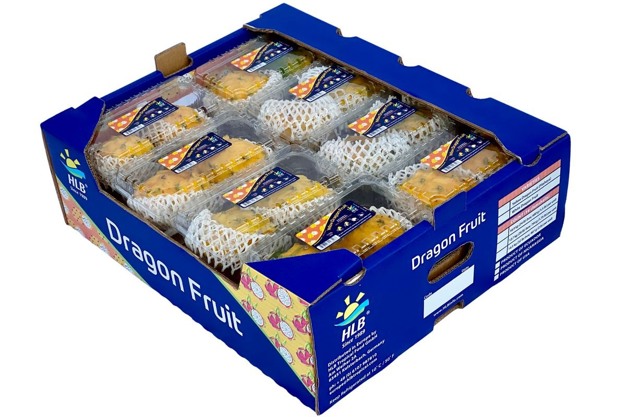The weeks leading up to Lunar New Year (January 29) tend to be hectic in the world of tropical and exotic produce. "Many people of Asian descent gift tropical and exotic fruits to family and loved ones for Lunar Year," says Andrés Ocampo with HLB Specialties. The first shipments start right at the beginning of the New Year, but preparations are already taking place now.
Tropical Treats box
In response to high consumer demand for exotics and tropicals, HLB Specialties has developed a "Tropical Treats" gift box for one of their retail clients. "It's tailored to a specific regional retailer who would like to offer something different, and our treat box is a pilot to test the market." The box contains a medley of tropical seasonal fruits. While the launch has been timed leading up to Lunar New Year, it doesn't have a specific reference to the celebrations. "It can be gifted throughout the year, hence the name Tropical Treats gift box."

Demand for Brazilian papaya could triple
An individual item that will be experiencing high demand as soon as the New Year kicks off is Brazilian papaya. "Demand doubles if not triples leading up to Lunar New Year and therefore, we've already been planning shipments with growers and airlines," shares Ocampo. Air space has been reserved, with retailers in Toronto, Los Angeles, and Vancouver seeing the highest demand. HLB is hopeful they will be able to meet the consumer demand, but warm weather in the southern hemisphere is having an impact on maturity of the fruit.
Challenging logistics for dragon fruit
Another popular item and adding color to the mix is dragon fruit. The season for yellow dragon fruit out of Ecuador started a few weeks ago and supply will continue for another four months, making it the longest season of the year. While the quality looks good, logistics have been a concern. "This time of year, it's very busy with produce shipments out of many South American countries, and dragon fruit from Ecuador competes for space with mangos. Demand for reefers has skyrocketed, resulting in a lack of units as well as a lack of space on the vessels," according to Ocampo. In addition, many shipments are experiencing delays due to hold ups at the Panama Canal. Low water levels are limiting the number of ships allowed to cross. "However, after the New Year, mangos from Ecuador will have winded down and with Peru being left as the only significant mango supplier to North America, some of the pressure should come off."
At the same time, shipping concerns won't disappear after the New Year as another East Coast port strike is pending as of January 15. It's right before the transition of the government and although the expectation is for a few days of interruption, it may take longer. "It's a very complicated situation and I believe there will be a strike no matter what. Whether it's a few days or a few weeks, I expect services at ILA managed ports on the East Coast will be interrupted."

Lower supply of South African lychees
The season for lychees from South Africa started in December and is also seeing robust demand. However, extreme heat has affected production levels. "Due to warm weather, the shell tends to get burned or even crack, breaking the skin while the fruit is still on the tree." This is having an impact on yields as well as supply, which is just not as abundant this season. South Africa is the major supplier of lychees to the U.S. market this time of year. Between May and July, lychees are sourced closer to the market, in Florida and Mexico.
 For more information:
For more information:
Andrés Ocampo
HLB Specialties
Tel: (+1) 954-475-8808
[email protected]
www.hlbspec.com
